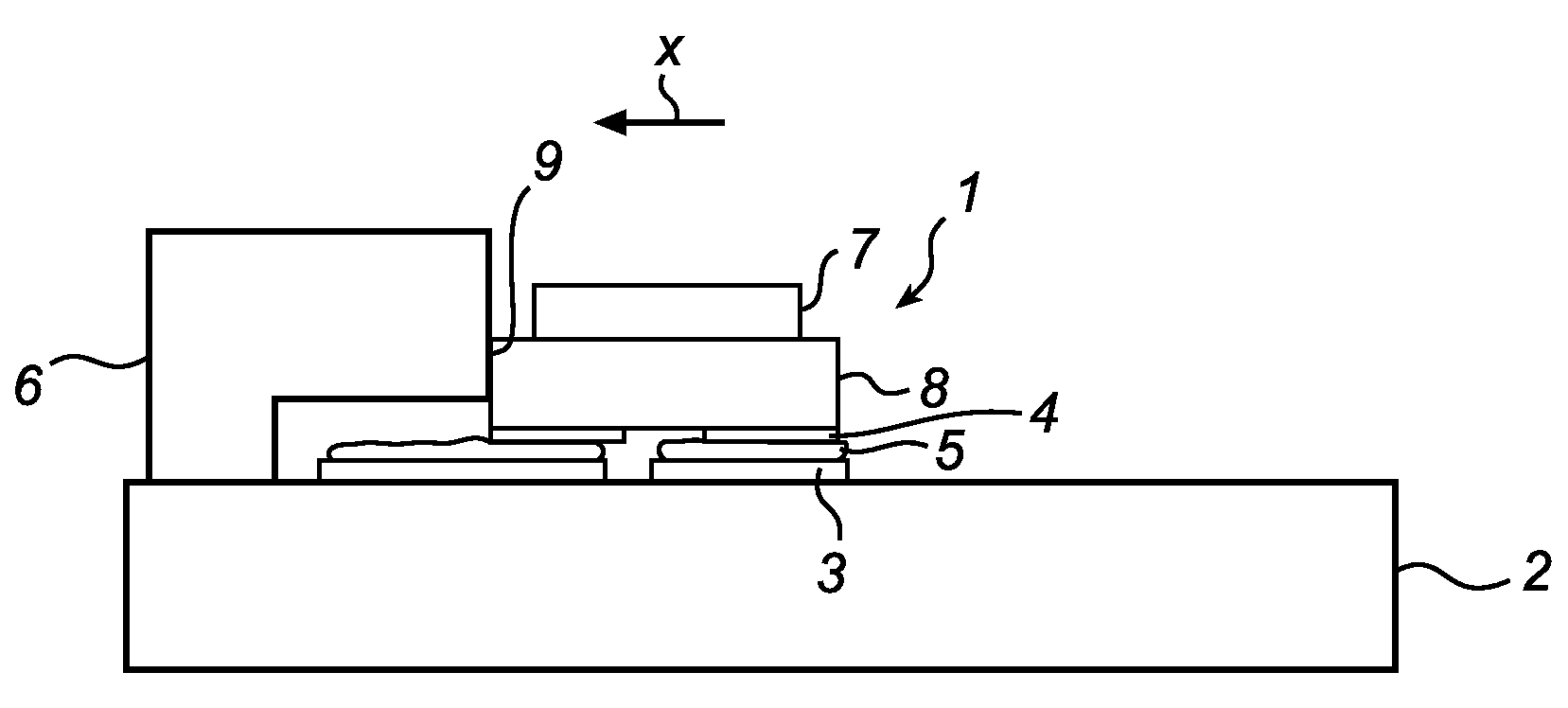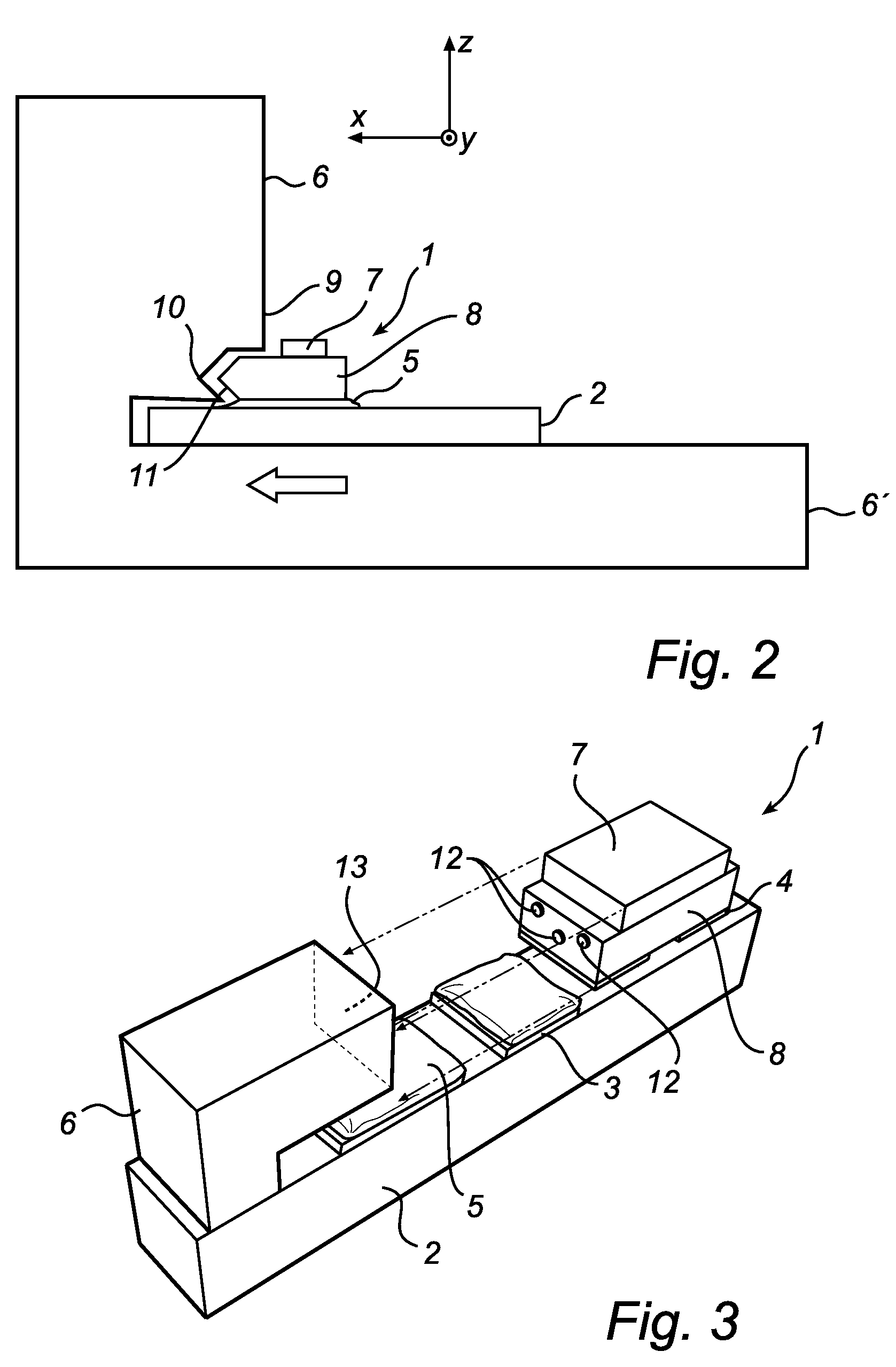Methods for mounting an electro-optical component in alignment with an optical element and related structures
a technology of electrooptical components and optical elements, applied in the direction of optics, instruments, optical light guides, etc., can solve the problems of insufficient accuracy of alignment, add to final positioning uncertainty, and come at a price, and achieve satisfactory electrical connection and satisfactory electrical connection
- Summary
- Abstract
- Description
- Claims
- Application Information
AI Technical Summary
Benefits of technology
Problems solved by technology
Method used
Image
Examples
Embodiment Construction
[0031]FIG. 1a-1c show a mounting structure, i.e. a collection of components, arranged for mounting an electro-optical component 1 accurately in relation to an optical element 6.
[0032]The electro-optical component 1 can be a LED or a photodiode, and typically is a “die-on-ceramics” (DoC) type component, i.e. a die mounted on a submount for subsequent mounting on a carrier substrate, such as a PCB. In FIG. 1a, the electro-optical component 1 comprises a LED die 7 on a submount 8. The electro-optical component can of course comprise more than one LED.
[0033]Reference number 2 denotes a carrier substrate, on which solder pads 3 also referred to as a “footprint”, are arranged. This footprint can serve multiple purposes, for example, but not limited to electrical connection, mechanical connections and thermal connections, and any combination thereof. Corresponding solder pads 4 are provided on the DoC 1, and solder material 5 is placed in between said solder pads 3 and 4. The solder materi...
PUM
 Login to View More
Login to View More Abstract
Description
Claims
Application Information
 Login to View More
Login to View More - R&D
- Intellectual Property
- Life Sciences
- Materials
- Tech Scout
- Unparalleled Data Quality
- Higher Quality Content
- 60% Fewer Hallucinations
Browse by: Latest US Patents, China's latest patents, Technical Efficacy Thesaurus, Application Domain, Technology Topic, Popular Technical Reports.
© 2025 PatSnap. All rights reserved.Legal|Privacy policy|Modern Slavery Act Transparency Statement|Sitemap|About US| Contact US: help@patsnap.com



